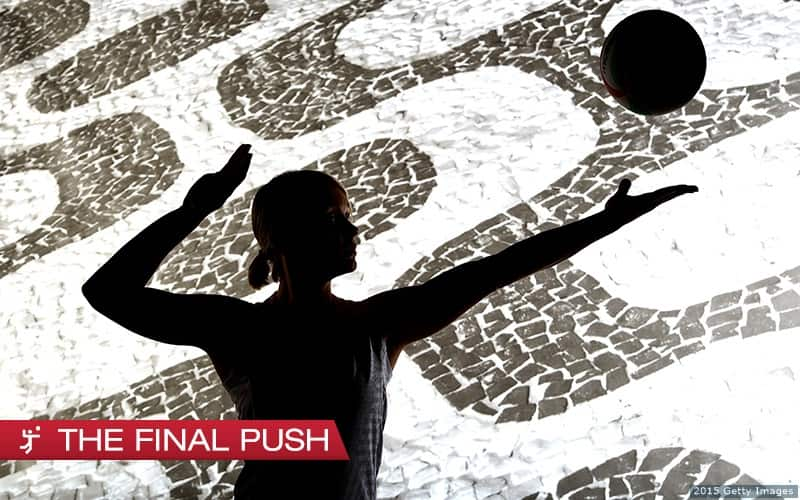
Each October, the top U.S. women’s volleyball players pack their bags and head to different corners of the world to begin their professional seasons.
For each of the past two seasons, Kayla Banwarth wasn’t one of them.
The 5-foot-10 libero has elected to stay in Southern California, where she can train with U.S. coach Karch Kiraly and her personal strength coach.
There are benefits to staying stateside. Banwarth, an Iowa native, trains hard five days a week, and then on weekends finds her way to a swimming pool or to nearby Huntington Beach — sometimes with her dogs, Shih Tzu Pekingese named Elle and Gracie
“They’re little divas,” she said.
For all of the sunshine and puppy love, though, there is one drawback to saying home.
“I get a lot of individual training,” she said, “but I don’t get a lot of six-on-six competition.”
That began to change on May 2, when the U.S. team officially embarked on training camp ahead of the Rio de Janeiro 2016 Olympic Games, and it will change in an even bigger way this weekend when the annual FIVB World Grand Prix opens with Team USA playing in Ningbo, China.
“There’s going to have to be a really strong sense of urgency to get better every day before that tournament,” Banwarth said at the Team USA Media Summit in March. “Those four or five weeks are really the only time we’re going to be able to compete together before the Olympic Games.”
The U.S. women open the tournament with three games in Pool A — against Germany on Friday, Thailand on Saturday and China on Sunday. They return to the United States for three more games June 17-19 in Long Beach, California, and then close out preliminary-round action with three more games June 24-26 in Hong Kong.
The World Grand Prix Finals, featuring the five highest ranked teams from the preliminary round and hosts Thailand, are set for July 6-10 in Bangkok.
“That’s going to be the only tournament we play, so it’s going to be really important for us to identify things like which 12 players we’ll take to the Olympics,” Kiraly said.
Kiraly and his staff are brining 14 athletes to the World Grand Prix, but the Olympic Games are the unique major event in which the squads are limited to 12.
“We have a lot of good (players),” Kiraly said. “We only get to take 12.”
He predicted the final cuts would likely be to drop a libero and a middle. Banwarth and Natalie Hagglund are splitting the libero duties in the first World Grand Prix weekend, while Rachael Adams, Foluke Akinradewo, Alexis Crimes and Christa Dietzen are the middles.
The World Grand Prix will also help the U.S. coaching staff set a foundation for a starting lineup and strategies for the Olympic Games, Kiraly said.
“We want to maximize the time that we have together, because it’s not a lot this year,” he said.
The top-ranked U.S. women come into the Olympic year hot, having won six of their last seven tournaments dating back to the 2014 FIVB World Championship, including last year’s World Grand Prix.
But China, playing on its home court this weekend, is No. 2.
“They’re on an ice trajectory,” Kiraly said. “They’re young, and they’re only going to get better.”
And the competition doesn’t drop off after China. Kiraly also listed Italy, Japan, the Netherlands and Russia as being among the top contenders for Rio, although he has no doubt who the favorites will be.
“Whoever wants to win the Olympic Games — and we want to, but every team wants to — knows they are going to have to beat Brazil to win the Olympics,” he said. “Brazil has great players, they won the last two Olympics, they have the same coaching staff, they have a lot of experience. They’re going to be really tough.
“They’re not the only team that’s going to be really tough, but they’re going to be very, very good with home-court advantage.”
For Team USA, silver medalists at the past two Olympic Games but never Olympic champions, that’s all part of the journey.
“It’s going to be a really neat tournament,” Kiraly said, “a great challenge.”
Chrös McDougall has covered the Olympic Movement for TeamUSA.org since 2009 on behalf of Red Line Editorial, Inc. He is based in Minneapolis-St. Paul.

